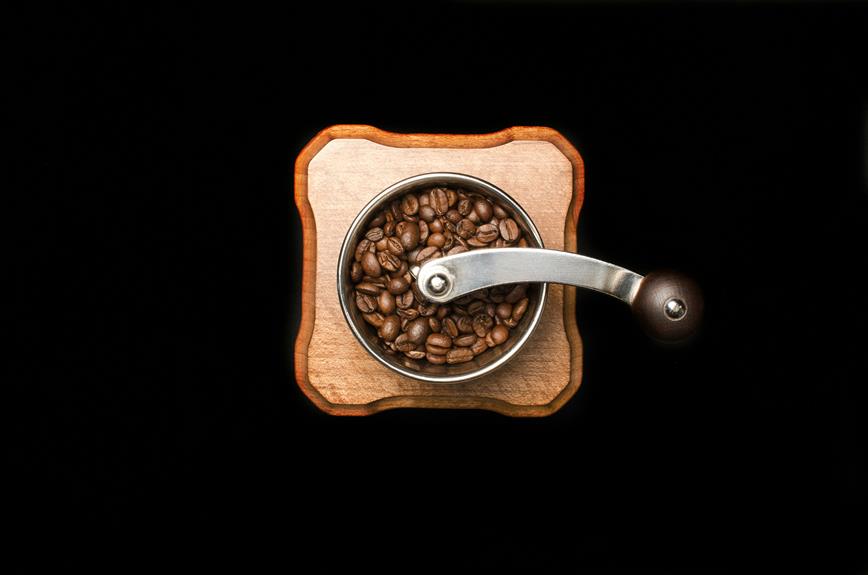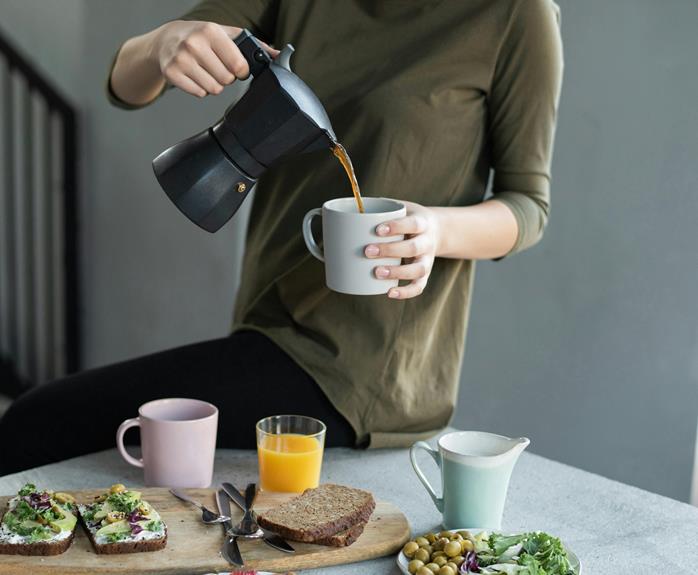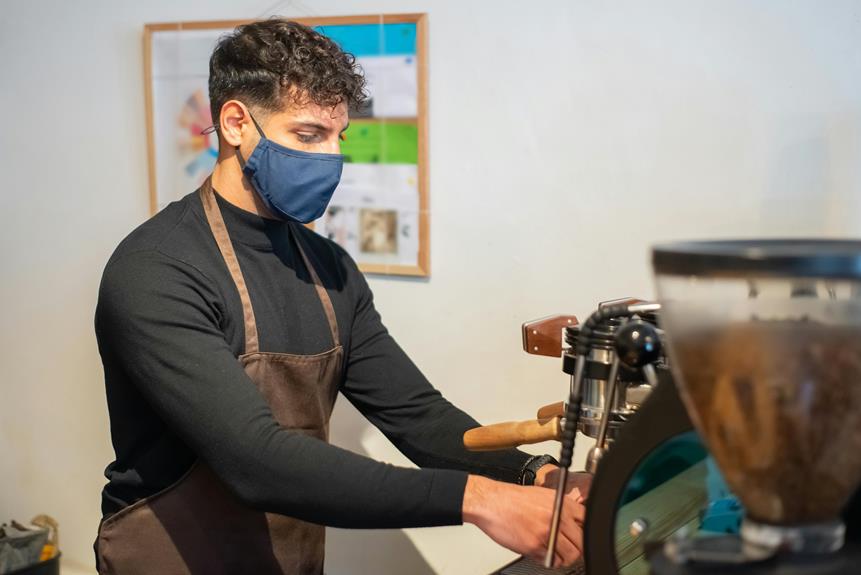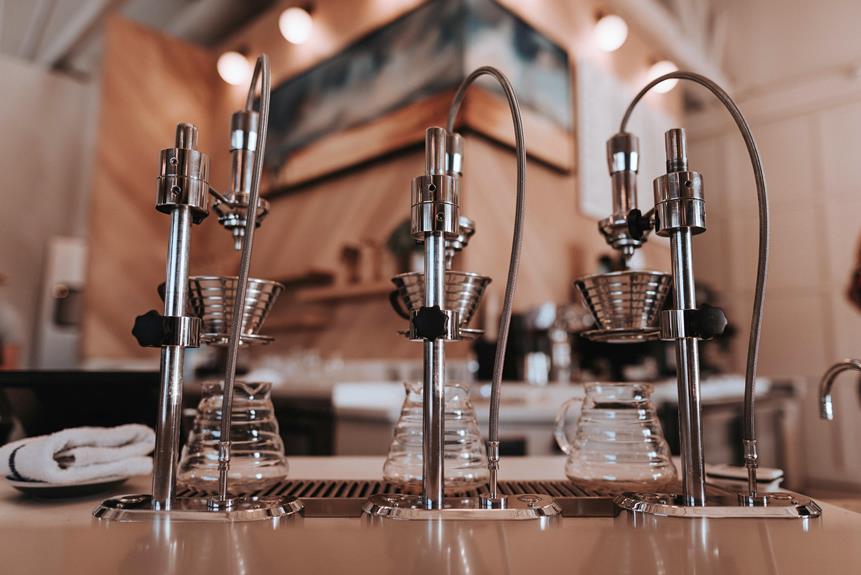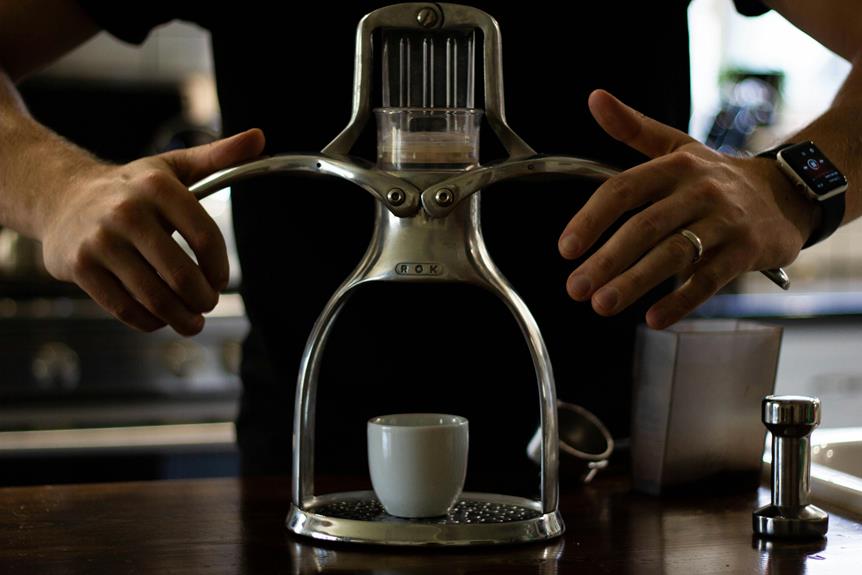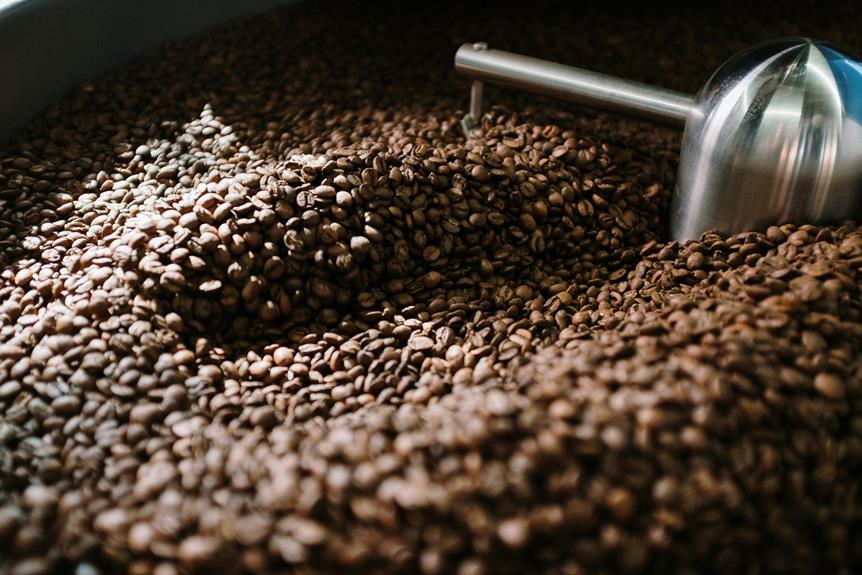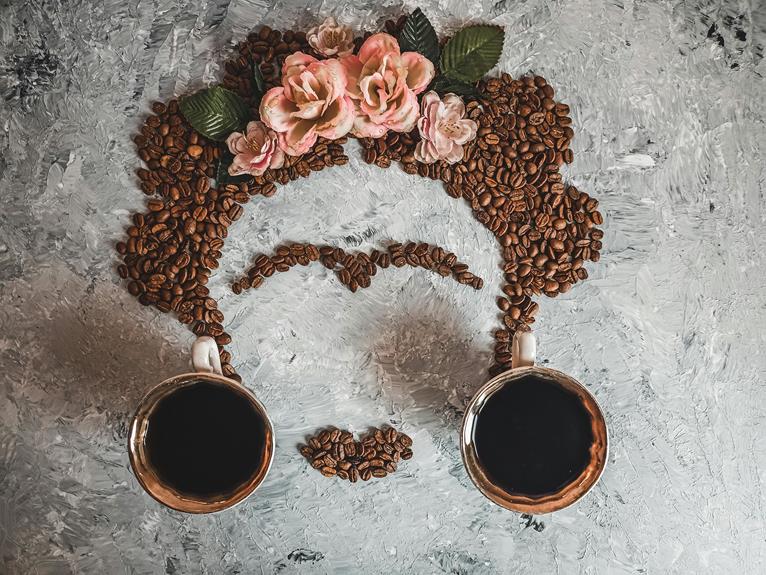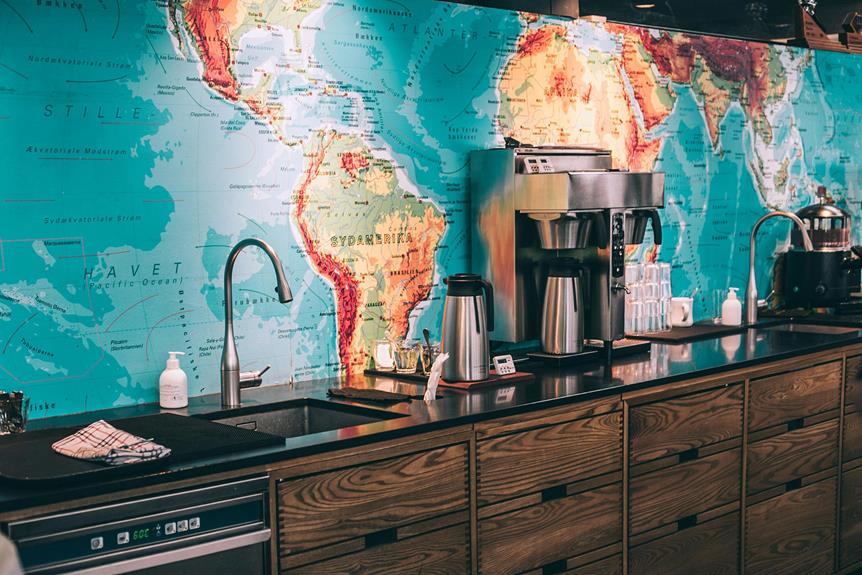You're one grind size away from brewing the perfect cup of coffee. For immersion brewing, go for a coarse grind, similar to kosher salt, for a rich and nuanced flavor. Drip and pour-over methods require a medium-coarse grind to prevent clogging or over-extraction. Espresso and stovetop demand a fine, almost powdery grind for high pressure and temperature. Cold brew and Turkish coffee benefit from a coarse grind, while Aeropress and Moka Pot need medium-fine to fine grinds. Experiment with different grind sizes to find the sweet spot for your brewing method and coffee beans, and discover the flavors waiting to be released in your cup.
Key Takeaways
- Coarse grind size is ideal for immersion brewing to prevent over-extraction and bitter taste, allowing for a rich, full-bodied flavor.
- Medium-coarse grind size is required for drip and pour-over brewing methods to achieve the perfect flow of water through the coffee.
- A fine, almost powdery grind size is necessary for espresso and stovetop brewing to facilitate high pressure and temperature.
- Coarse grind size is suitable for cold brew and Turkish coffee due to the slower extraction process, resulting in a smooth flavor profile.
- Medium-fine to fine grind sizes are ideal for Aeropress and Moka Pot brewing, respectively, to guarantee optimal extraction and a smooth flavor profile.
Immersion Brewing Grind Sizes
When brewing with immersion methods, you'll typically want to use a coarse grind size, similar to kosher salt or slightly finer, to allow for the right balance of flavor and body. This grind size helps to prevent the coffee grounds from over-extracting, resulting in a bitter taste. With immersion brewing, the coffee grounds are in contact with the water for a longer period, so a coarser grind helps to prevent this.
The ideal flavor profiles for immersion brewing are often described as rich, full-bodied, and nuanced. To achieve this, you'll want to experiment with different grind sizes to find the sweet spot. For example, a slightly finer grind can bring out more delicate flavors, while a coarser grind can emphasize bold, darker notes.
Water temperatures also play a vital role in immersion brewing. Aim for temperatures between 195°F and 205°F to extract the perfect amount of flavor from your coffee. By combining the right grind size with the ideal water temperature, you'll be well on your way to brewing a delicious cup of coffee that suits your taste preferences.
Drip and Pour-Over Grinds
You'll need a distinctly different grind size for drip and pour-over brewing methods, which require a more precise balance of flavor and body. For these methods, you're aiming for a medium-coarse grind that allows for the perfect flow of water through the coffee.
If the grind is too fine, it'll clog the filter or lead to over-extraction, resulting in a bitter taste. On the other hand, a grind that's too coarse will lead to under-extraction and a weak coffee.
The ideal grind size for drip and pour-over brewing will produce a coffee texture that's smooth and balanced. You want to achieve a flavor profile that's nuanced, with notes of sweetness and acidity.
A medium-coarse grind will allow the coffee's natural flavors to shine through, without any bitter or sour notes. Experiment with different grind sizes to find the sweet spot for your particular brewing method and coffee beans.
Espresso and Stovetop Options
For espresso and stovetop brewing, a much finer grind is required to facilitate the high pressure and temperature involved in these methods can extract the maximum amount of flavor and oil from your coffee beans. You'll want to aim for a grind that's almost powdery, as this will guarantee the best possible extraction.
When it comes to espresso, you'll want to experiment with different roast levels to find the perfect balance for your taste buds. Lighter roasts will bring out more acidity and fruit notes, while darker roasts will add depth and richness.
Three tips to keep in mind when selecting beans for espresso and stovetop brewing:
- Choose high-quality beans: Fresh, specialty-grade beans will result in a more complex and nuanced flavor profile.
- Consider your roast level: Lighter roasts are perfect for espresso, while medium to dark roasts work well for stovetop brewing.
- Experiment with bean selection: Try different origins, blends, and single-origin beans to find the perfect flavor for your taste buds.
Cold Brew and Turkish Coffee
Cold brew and Turkish coffee require a much coarser grind than espresso and stovetop methods, as the slower extraction process demands a more rugged texture to achieve perfect flavor.
When brewing cold brew, you're looking for a grind that's similar to kosher salt. This coarse grind allows for a smooth, low-acidity flavor profile that's perfect for hot summer days.
For Turkish coffee, you'll want an even coarser grind, similar to sea salt. This fine-tuned grind size facilitates the delicate flavors and oils from the coffee beans are extracted perfectly, resulting in a rich and intense cup.
The bean origin also plays a significant role in the flavor profile of your cold brew and Turkish coffee. If you're using beans from a single origin, you'll notice a more distinct flavor profile. However, if you're using a blend, the flavors will be more balanced.
Aeropress and Moka Pot Grinds
Moving from the coarse grinds of cold brew and Turkish coffee, you're now working with finer textures when brewing with an Aeropress or Moka Pot. These brewing methods require a more nuanced approach to grind size, as the right texture can make all the difference in the flavor profiles you're trying to achieve.
When it comes to Aeropress, you'll want to aim for a medium-fine grind, similar to kosher salt. This will allow for the right amount of extraction and a smooth, full-bodied flavor. For Moka Pot, a fine grind, similar to table salt, is best. This will facilitate the water flowing through the coffee grounds quickly and evenly, resulting in a rich and intense flavor.
Optimal extraction: The right grind size guarantees the perfect balance of flavors in your cup.
Smooth flavor profiles: Avoid bitter or under-extracted flavors by using the right grind size for your brewing method.
Increased control: By experimenting with different grind sizes, you can customize the flavor to your liking and develop a deeper appreciation for the coffee-making process.
Frequently Asked Questions
Can I Use a Food Processor to Grind My Coffee Beans?
You can try using a food processor to grind your coffee beans, but be aware that it might not produce the ideal coffee texture and has limitations regarding even grinding and potential heat generation.
Do Grind Sizes Vary Between Light and Dark Roasted Coffee?
You'll be surprised to know that 70% of coffee's flavor comes from the roast level! When it comes to grind sizes, you'll find that darker roasts require a coarser grind to bring out their bold flavor profile, while lighter roasts need a finer grind for a brighter taste.
How Often Should I Clean My Coffee Grinder to Prevent Oil Buildup?
You should clean your coffee grinder every 1-2 weeks to prevent oil accumulation, as residual oils from beans can affect flavor and clog the grinder; regular grinder maintenance is key to peak performance.
Can I Store Ground Coffee in an Airtight Container for Later Use?
You can store ground coffee in an airtight container, but it's essential to choose a container made of non-porous materials like glass or ceramic to preserve freshness.
Will a Blade Grinder Produce the Same Results as a Burr Grinder?
You'll notice a difference between blade and burr grinders; blade grinders generate heat, damaging beans, and lack durability, while burr grinders produce a consistent grind without heat generation, ensuring a better-tasting cup.
Conclusion
You've navigated the grind size spectrum like a pro!
From immersion to espresso, you now know the perfect grind for each brew.
Remember, it's all about harmony – the right grind, the right beans, and the right brew method.
As the ancient Greeks would say, 'The whole is more than the sum of its parts.'
Now, go forth and brew like a master, and may your cups always be full of flavor and joy!
